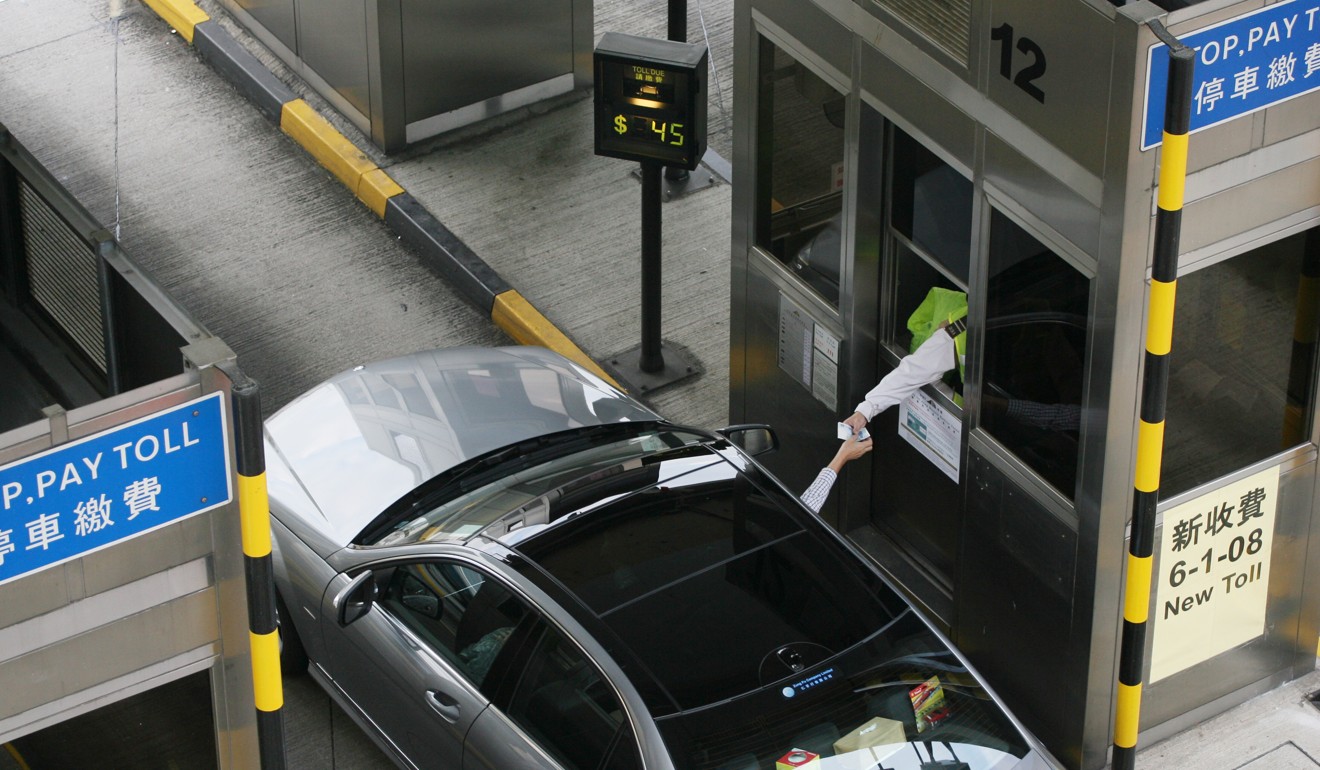
Western Harbour Tunnel, most expensive crossing in Hong Kong, and New Territories route to hold rates steady for motorists
Lawmaker says decisions by two private companies reflect consumers’ inability to stomach higher fees mandated by law
Motorists in Hong Kong will pay the same rates as before to use the city’s most expensive cross-harbour tunnel and a route in the New Territories despite rising statutory tolls.
The decisions reflect consumers’ inability to stomach higher fees, a lawmaker said.
Officials announced on Thursday they had been told by owners of the Western Harbour Tunnel and Route 3 of their plans to increase statutory tolls, which are due to take effect on July 31 and August 1 respectively.
“The two companies will continue to offer concessions to all types of vehicles so that current actual toll levels payable by motorists will remain unchanged,” a government spokesman said.

A Transport and Housing Bureau spokesman added that officials did not expect usage of the tunnel and route to change since the actual tolls would “remain unchanged”.
Under the build-operate-transfer agreements between the government and the owners of the tunnel and route, the two private companies can adjust charges when their revenues fall short of the legally specified minimum estimate.
Last year, the Western Harbour Tunnel Company estimated an annual revenue of HK$3.5 billion (US$446 million) but the actual figure was HK$1.5 billion.
Can tolls at Cross-Harbour and Lion Rock tunnels be raised?
Statutory tolls for the tunnel, which links Sai Ying Pun and West Kowloon across Victoria Harbour, are set to rise by 7 per cent on average; those for the routes are to go up by 5.7 per cent.
For instance, the statutory toll on the Western Harbour Tunnel for private cars will increase from HK$225 to HK$240.
According to the company’s calculation, a toll of HK$70 will bring them the most revenue
However, due to a discount offered by the company, drivers actually pay HK$70.
Despite the concession, the tunnel remains the most expensive in the city for traversing the harbour.
Hung Wing-tat, a long-time member of the Hong Kong Institution of Transportation and Logistics Management, said maintaining the actual tolls was a business decision.
“According to the company’s calculation, a toll of HK$70 will bring them the most revenue,” he explained, referring to the tunnel.
Increasing the fee would only drive motorists away, he added.
As the company had already reduced its concessions in May, Hung also said he was not expecting a rise in actual tolls in the near future.
Democratic Party chairman Wu Chi-wai said the unchanged rates reflected a reality confronting the two private companies that “the market cannot withstand the tolls”.
Ownership of the Western Harbour Tunnel is set to be returned to the government in 2023.

